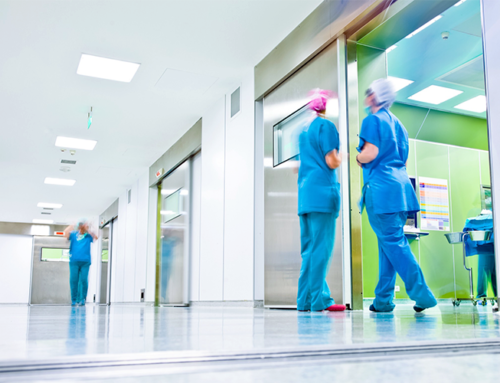
Advancements in modern technology and increasing efficiencies in healthcare practice are allowing more people to live longer than ever before. With a swelling senior population, there’s urgency for access to skilled nursing and assisted living facilities, as aging adults slowly lose the ability to effectively care for themselves.
As a result, the expenses pertaining to senior living also continue to climb—not only for patients but also for care facilities—with increasing needs to acquire modern equipment and expand the amount of staff needed to provide adequate care.
Wisconsin’s Problem With Deadly Falls Among Elderly
According to recent data from the Centers for Medicare and Medicaid Services, 19.6% of Wisconsin nursing home residents fell with 7.2% of those falls resulting in injury. Wisconsin’s Department of Health Services tallied up 2,664 falls—most of them with injuries—among assisted living facilities in Wisconsin in 2017 (an 11 percent increase over the previous year). State data also revealed that 27 percent of deadly falls among those aged 65 or older occur in nursing homes and assisted living facilities.
Obstructions to funding on necessary equipment and employing sufficient staff could be disastrous, so it is critical to explore facility design elements that can improve resident care and your organization’s value proposition. One advantageous way to slash operational costs, while at the same time improving value to potential residents, is by retrofitting or upgrading facility lighting design.
Advancements In Lighting Technology
Lighting advancements are among the latest and most-promising innovations to ensure a better quality of life. Not only for seniors in nursing and assisted living facilities but also for the general public. Using LED lighting with circadian-calibrated lighting design (lighting that mimics natural light as closely as possible), can complement the assisted living resident experience in significant ways, including:
- Increased safety with better light quality and color-rendering
- Improved comfort and satisfaction with tunable lighting and lighting controls
- Guaranteed energy and maintenance savings (which can be re-invested in additional care environment improvements)
Benefits of Tunable Lighting in Senior Living Facilities
Safety
It’s the most important consideration for any facility improvement: safety. Nursing and assisted living facilities are often in-operation 24/7 throughout the year, and require proper lighting at all times throughout the day to support the needs of residents. For example, dark corridors filled with shadows can be unsafe, but they can also trigger fear in people, especially among seniors suffering from dementia.
Another example is when a resident has to get out of bed to use the bathroom at night; they require light levels that exceed a typical nightlight, but not so much as to provide the full brightness of room lighting. LED lighting is tunable and controllable in a variety of ways, unlike other lighting technologies, which can provide residents with a sense of safety and security in their spaces.
Visual Capabilities
Another fundamental element is lighting that adapts to the changing vision capabilities of the elderly. As the eyes age and deteriorate, they become less efficient, causing glare to become very distracting and irritating. Impaired vision raises considerable concerns regarding the safety of the elderly. Insufficient lighting is a safety risk, because it has an impact on depth perception and other visual abilities, making seniors especially susceptible to accidents—particularly fall injuries. It takes longer for the mature eye to adapt to significant changes in light levels, so light levels from space-to-space should be kept high, uniform, and consistent to prevent injuries.
Resident Satisfaction
An additional opportunity to improve the lifestyle and convenience of those in assisted living is to provide residents with the ability to control parts of their environment. Assisted living communities have already begun focusing on creating welcoming environments which feel like home and allow residents to control amenities, like temperature, television, and lighting.
Advances in LEDs allow the ability to directly control and adjust lighting for different environments, like common areas and resident rooms, or to a resident’s particular preference. Some LED products offer features like “adjustable correlated color temperature” and wireless lighting controls, which give assisted living providers greater control over individual spaces within their facility.
Reduced Energy Consumption
LED lighting is a golden opportunity to improve resident experience while effectively lowering facility energy consumption and maintenance costs. The U.S. Energy Information Administration claims cooling, lighting, and ventilation account for over 70% of a healthcare facility’s electricity usage; lighting-alone consuming more than 40 percent! Applying LED lamps or fixtures across common areas, hallways, staff offices, and resident rooms, offers high-quality, efficient, and near-maintenance-free illumination—and paired with lighting controls, can reduce energy consumption as much as 70 percent over fluorescent lighting—offering obtainable payback periods and providing long-term budget savings.
Improved Resident Well-Being
Take our case study of Gundersen Tweeten Care Center, in Spring Grove, Minnesota, for example. When they changed from fluorescent lamps to circadian-balancing lighting installed by Energy Performance Lighting, they experienced a 63% reduction in energy costs and had these side benefits:
- Lowered the number of resident falls over 30 percent
- Decreased the use of anti-anxiety and anti-psychotic meds
- Reduced instances of resident sundowners occurrences nearly 40 percent
For Medicare, one fall can be hundreds-of-thousands-of-dollars if there’s an injury involved. In the case of Tweeten Care Center, the number of falls they cut down on saved them enough money to pay back for the lighting system sooner.
Maple Ridge Testimonials
After installing a dynamic lighting system in the Maple Ridge Care Center—located in Spooner, Wisconsin—we invited facilities maintenance staff and nursing staff to attend our presentation at the WHCA/WiCAL Spring Conference. Here’s what they had to say about the new lighting improvements:
Conclusion
EPL has proudly worked with skilled nursing facilities, assisted living facilities, and other healthcare organizations across Wisconsin and the Midwest, in an effort to demonstrate the positive effects and benefits light has on human health, particularly among the elderly. Utilizing cutting-edge lighting technology and the information we’ve gathered from the world’s largest research study on light and human health, we’re able to provide elderly care administrators some peace-of-mind about facility safety and occupant well-being. The side benefit: saving 60 percent on your electric bill.
Flip The Switch!
Start on the road to energy efficiency with lighting solutions by Energy Performance Lighting!




